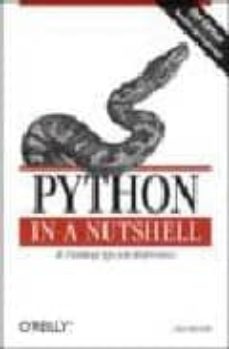Imprescindibles
Ficción
No Ficción
Ciencias y tecnología Biología Ciencias Ciencias naturales Divulgación científica Informática Ingeniería Matemáticas Medicina Salud y dietas Filología Biblioteconomía Estudios filológicos Estudios lingüísticos Estudios literarios Historia y crítica de la Literatura
Humanidades Autoayuda y espiritualidad Ciencias humanas Derecho Economía y Empresa Psicología y Pedagogía Filosofía Sociología Historia Arqueología Biografías Historia de España Historia Universal Historia por países
Infantil
Juvenil
#Jóvenes lectores Narrativa juvenil Clásicos adaptados Libros Wattpad Libros Booktok Libros de influencers Libros de Youtubers Libros Spicy Juveniles Libros LGTBIQ+ Temas sociales Libros ciencia ficción Libros de acción y aventura Cómic y manga juvenil Cómic juvenil Manga Shonen Manga Shojo Autores destacados Jennifer L. Armentrout Eloy Moreno Nerea Llanes Hannah Nicole Maehrer
Libros de fantasía Cozy Fantasy Dark academia Hadas y Fae Romantasy Royal Fantasy Urban Fantasy Vampiros y hombres lobo Otros Misterio y terror Cozy mistery Policiaca Spooky Terror Thriller y suspense Otros
Libros románticos y de amor Dark Romance Clean Romance Cowboy Romance Mafia y amor Romance dramatico Romcom libros Sport Romance Otros Clichés Enemies to Lovers Friends to Lovers Hermanastros Slow Burn Fake Dating Triángulo amoroso
Cómic y manga
Novela gráfica Novela gráfica americana Novela gráfica europea Novela gráfica de otros países Personajes, series y sagas Series y sagas Star Wars Superhéroes Cómics DC Cómics Marvel Cómics otros superhéroes Cómics Valiant
eBooks
Literatura Contemporánea Narrativa fantástica Novela de ciencia ficción Novela de terror Novela histórica Novela negra Novela romántica y erótica Juvenil Más de 13 años Más de 15 años Infantil eBooks infantiles
Humanidades Autoayuda y espiritualidad Ciencias humanas Economía y Empresa Psicología y Pedagogía Filosofía Historia Historia de España Historia Universal Arte Cine Música Historia del arte
Ciencia y tecnología Ciencias naturales Divulgación científica Medicina Salud y dietas Filología Estudios lingüísticos Estudios literarios Historia y crítica de la Literatura Estilo de vida Cocina Guías de viaje Ocio y deportes
ALEX MARTELLI
Recibe novedades de ALEX MARTELLI directamente en tu email
Filtros
Del 1 al 3 de 3
O'REILLY & ASSOCIATES 9780596100469
Alex MartelliThis book offers Python programmers one place to look when they need help remembering or deciphering the syntax of this open source language and its many powerful but scantily documented modules. This comprehensive reference guide makes it easy to look up the most frequently needed information - not just about the Python language itself, but also the most frequently used parts of the standard library and the most important third-party extensions. Ask any Python aficionado and you'll hear that Python programmers have it all: an elegant object-oriented language with readable and maintainable syntax, that allows for easy integration with components in C, C++, Java, or C#, and an enormous collection of precoded standard library and third-party extension modules. Moreover, Python is easy to learn, yet powerful enough to take on the most ambitious programming challenges. But what Python programmers used to lack is a concise and clear reference resource, with the appropriate measure of guidance in how best to use Python's great power. Python in a Nutshell fills this need. Python in a Nutshell, Second Edition covers more than the language itself it also deals with the most frequently used parts of the standard library, and the most popular and important third party extensions. Revised and expanded for Python 2.5, this book now contains the gory details of Python's new subprocess module and breaking news about Microsoft's new IronPython project. Our Nutshell format fits Python perfectly by presenting the highlights of the most important modules and functions in its standard library, which cover over 90 per cent of your practical programming needs. This book includes: a fast-paced tutorial on the syntax of the Python language an explanation of object-oriented programming in Python coverage of iterators, generators, exceptions, modules, packages, strings, and regular expressions a quick reference for Python's built-in types and functions and key modules reference ma...
Ver más
Tapa blanda
ANAYA MULTIMEDIA 9788441523173
El lenguaje de programación Python logra reconciliar evidentes contradicciones: es tan elegante como pragmático, es simple pero potente, es de muy alto nivel, aunque no resulta molesto cuando hay que modificar bits y bytes. Se adapta a programadores principiantes y a expertos. Éste es un libro de referencia para los programadores de Python para cuando necesiten recordar y descifrar la sintaxis de este lenguaje de código abierto y sus muchos y potentes módulos escasamente documentados. No sólo alcanza al lenguaje Python, sino también a la búsqueda de las partes más utilizadas de la biblioteca estándar y de las extensiones creadas por otras compañías abarcando múltiples áreas de aplicación, incluyendo programación de redes y de páginas Web, interfaces gráficas de usuarios GUI, gestión de XML, interacción en bases de datos e informática numérica de alta velocidad. El libro se centra en las capacidades multiplataforma de Python y trata lo esencial sobre la extensión y la incorporación de Python en otras aplicaciones, utilizando tanto C como Java. El estilo de escritura es claro y directo y está acompañado de ejemplos muy ilustrativos.
Ver más
Tapa blanda
Del 1 al 3 de 3
























